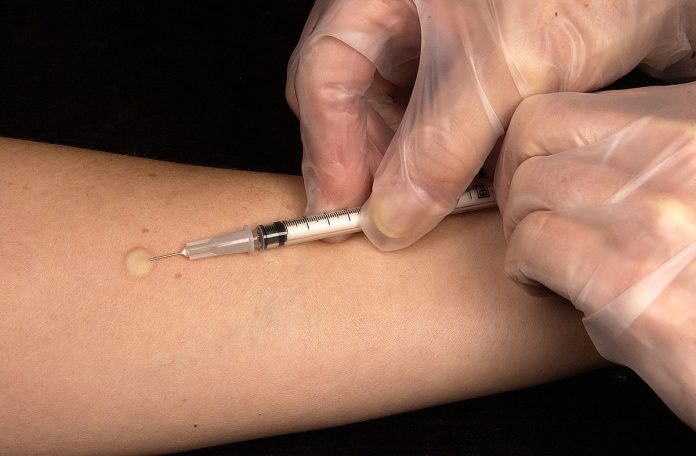What is Tuberculous Lymphadenitis?
Tuberculous lymphadenitis is an inflammation of the lymph node. This is the most common form of tuberculosis that takes place outside the lungs. It is caused by Mycobacterium, the common cause of pulmonary tuberculosis. Tuberculous Lymphadenitis is commonly called as collar stud abscess because of its growth closer to the collarbone.
Self-diagnosis that calls for treatment
The physical symptoms noticed by the patient that should prompt a visit to the doctor includes an in-growth of an enlarged lymph node that is tender. This node might just be stagnantly present without any pain or a local pain, but the skin above remains unaffected.
When such a swelling is felt on the lymph node of the neck, a call for medical action is recommended. Also, look for symptoms like rise in body temperature during evenings, persistent cough or a sudden weight loss.
Medical Diagnosis of Tuberculous Lymphadenitis
-
FNAC or Fine Needle Aspiration Cytology
Only a physical examination for the above-mentioned symptoms is not necessarily a clinical determination of Tuberculous Lymphadenitis. The doctor will list down a few tests which are crucial for the right diagnosis of the disease. The most important diagnostic test for Lymph node TB would be FNAC (fine needle aspiration cytology). A required sample of blood is extracted from the affected neck lymph node and sent for a lab test. This is one of the most acceptable and highly sensitive clinical techniques for the investigation of lymphadenitis. This test is completely safe and accurate with a quick result.
-
TB Skin Test
The TB skin Test is another test that is widely used for diagnosing TB. After the completion of the course of TB medications, doctors usually perform this test to check if the TB germs still prevail inside the patient body.
A small amount of fluid called tuberculin is injected on the inner part of the lower arm. How the body reacts to the fluid is what the doctor will analyze for TB. The patient is asked to return after 48-72 hours of injecting the fluid. The hard swelling barring the surrounding redness is measured to get the test result.
However, this is not always a significant and accurate result and is done in combination with other tests to reach to the accurate diagnosis.
Treatment of TB
A programme called DOT (Directly observed therapy) is a strategical treatment option endorsed by WHO to help people stick to the full course of treatment over a certain span of time.
Tuberculosis of the lymph node is often asymptomatic, hence, it is important to keep checking lymph nodes for any swelling at regular intervals. This is a very common condition and is completely curable if timely diagnosed and treated. Check with an ENT or Otorhinolaryngologist for better analysis and follow with the right diagnostic test.
An early diagnosis confirms an accurate medical treatment for the cure. Book an FNAC test on the specialist’s advice at a lab near you.



